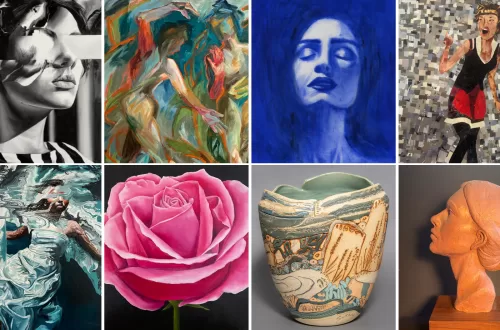
Exploring the Minimalism of Agnes Martin
 Agnes Martin (1912–2004) was a Canadian-born American abstract painter, renowned for her subtle, minimalist canvases that invite contemplation and quiet introspection. Often associated with Minimalism, her work transcended strict categorization, embodying a unique blend of abstract purity, spiritual depth, and a profound connection to nature. Martin’s enduring legacy lies in her unwavering dedication to a singular artistic vision, one that sought to express universal truths through the most understated means.
Agnes Martin (1912–2004) was a Canadian-born American abstract painter, renowned for her subtle, minimalist canvases that invite contemplation and quiet introspection. Often associated with Minimalism, her work transcended strict categorization, embodying a unique blend of abstract purity, spiritual depth, and a profound connection to nature. Martin’s enduring legacy lies in her unwavering dedication to a singular artistic vision, one that sought to express universal truths through the most understated means.
A Life Dedicated to Subtlety and Inner Vision
Best known for her meditative geometric, minimalist compositions, Canadian-American painter Agnes Martin is one of the most prominent figures in the field of abstract expressionism. Very much inspired by Eastern philosophies (Taoist and Zen), Martin developed her style centered around geometric abstraction, which features a palette of beige, creams, grays and browns. Martin’s body of work is a testament to the painter’s devotion to the harmony and beauty of nature. “The Tree” (1964) is an example of the artist’s grid painting style, which features fine vertical lines and “lightly shaded horizontal bands” (source: MoMA). While the painting bears no direct connection to the title, “The Tree” is not an attempt to represent reality, but instead, can be seen as an effort to convey what the painter called “abstract emotions”.
“When I first made a grid, I happened to be thinking of the innocence of trees, and then a grid came into my mind and I thought it represented innocence, and I still do, and so I painted it and then I was satisfied. I thought, ‘This is my vision.’” (Agnes Martin)
Martin’s artistic journey was marked by a gradual distillation of her style, moving away from early surrealist and abstract expressionist influences towards the serene, grid-based compositions for which she became famous. After moving to New York in the late 1950s and becoming part of the burgeoning minimalist scene, she developed her signature approach: large, square canvases, meticulously hand-drawn grids of pencil lines, often overlaid with washes of pale, translucent color.

Key characteristics of Martin’s work include:
- The Grid: Far from being rigid or mechanical, Martin’s grids are hand-drawn, revealing subtle imperfections and variations that imbue them with a human touch. These grids are not meant to represent anything specific but rather to serve as a structure for infinite variations, evoking a sense of calm and order.
- Subtle Color Washes: Her use of muted, often barely perceptible washes of color – pale blues, grays, pinks, and yellows – creates a luminous, atmospheric quality. These colors are applied thinly, allowing the canvas to breathe and the light to interact with the surface.
- Emphasis on Horizontal and Vertical Lines: Her compositions often feature repetitive horizontal and vertical lines, creating a rhythmic, meditative quality that draws the viewer into a state of quiet observation.
- Transcendental Minimalism: While minimalist in form, Martin’s work is deeply spiritual and philosophical. She sought to evoke feelings of innocence, happiness, and perfection, believing that true art should transcend the mundane and connect with universal emotions. She famously stated, “My paintings are not about what is seen. They are about what is known forever in the mind.”
- The Importance of the Viewer’s Experience: Martin’s paintings demand patience and quiet engagement. They are not meant to be quickly consumed but to be experienced slowly, allowing the subtle shifts in light, line, and color to unfold.
A Legacy of Serenity and Contemplation
Agnes Martin’s work stands as a testament to the power of subtlety and the profound impact of a focused artistic vision. She forged a path distinct from her contemporaries, proving that abstract art could be both intellectually rigorous and deeply moving. Her paintings offer a sanctuary of calm in a chaotic world, inviting viewers to slow down, observe, and connect with a sense of universal harmony. Her influence continues to be felt in contemporary art, inspiring artists who seek to explore the intersections of abstraction, spirituality, and the human experience.





